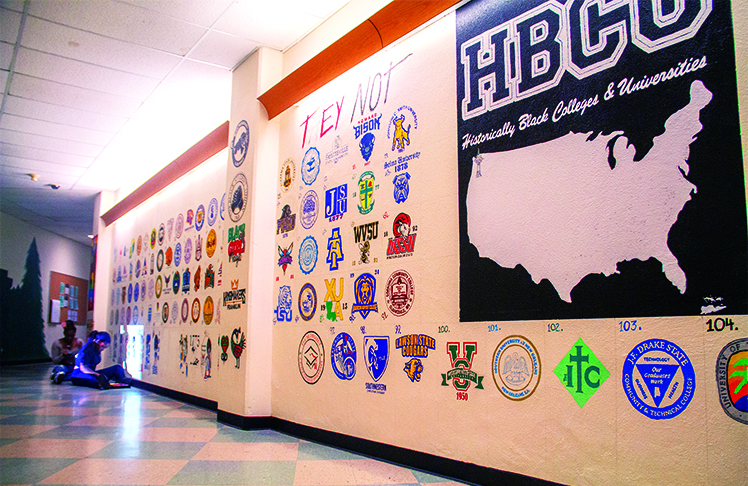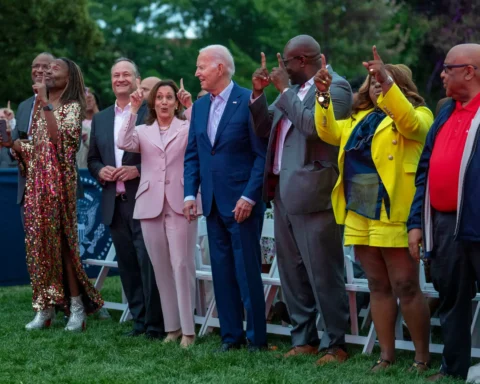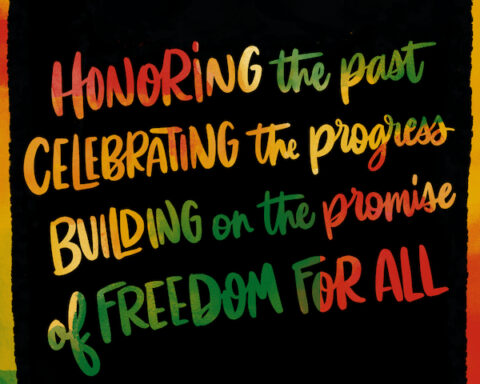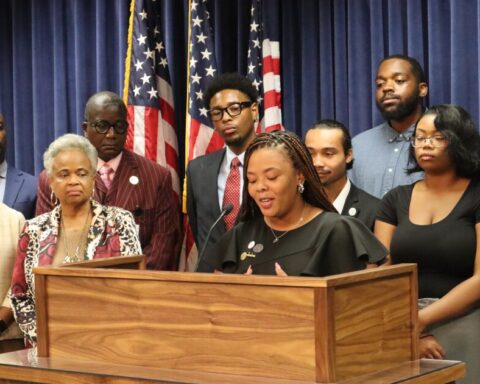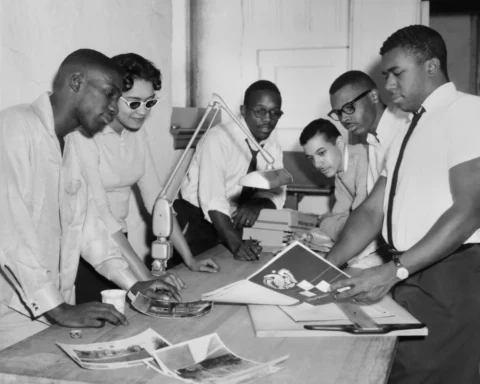By Aaron Allen,
At Franklin High School, students are helping preserve and celebrate the legacy of Historically Black Colleges and Universities (HBCUs) in the face of what many view as a national cultural assault on Black history. Through a powerful mural now stretching across two walls of the school’s second floor, Franklin’s Black Student Union and student body are honoring the institutions that have historically supported Black academic achievement and cultural identity.
The mural, which began eight years ago under the guidance of former teacher and BSU mentor Judy Griffin, originally featured 20 HBCU emblems. Today, it includes all 107 HBCUs, painted in chronological order by founding date—from Cheyney University, established in 1837, to Charles Drew University of Medicine and Science, founded in 1966. Alongside the college emblems, the mural features the logos of the Divine Nine Black Greek organizations and key Black community groups that have shaped African American life.
“When I came back this year, after doing these HBCU tours, I asked the principal if we could take two walls and bring awareness and promote things that were happening for our students in our building,” said Craig Jackson, a Franklin staff member and former boys’ varsity basketball coach who attended Langston University, an HBCU. “So, in the middle, we had just done a lesson on the city. In 1968 here at Franklin, to get students back in school that were kicked out for a fight—and they were all Black students—the BSU from the University of Washington came, and some of the Black Panthers came and sat in with the kids and then got some of their demands met. The kids came back to school, and they started the BSU here at Franklin in 1968 as well.”
Jackson, seeing the original mural as “nice but incomplete,” approached Principal Erik Weiss about finishing it. Weiss said he was immediately supportive of the idea.
“When I first came, [there were] like 18 or 20 of the HBCUs on the wall,” Weiss said. “Craig Jackson and the Black Student Union this year has really taken it upon themselves to kind of update it to reflect the kind of huge increase and diversity of the amount of HBCUs and how many of our kids are trying to access those this year.”
“So really, we handed it over to Mr. Jackson. He has been here Saturdays, after school, kind of spearheading this and, even more exciting to me, getting the kids super involved—not just in doing the artwork, but also learning more about this,” Weiss added. “I know he’s also helped coordinate a couple of trips to several of these HBCUs to provide students access. And I know they’re continuing to work on that with him and Miss J.J., one of our advisors for the Black Student Union and other groups.”
Franklin High School sits at the edge of Seattle’s historic Central District, once the heart of the city’s Black community. Its towering, early-20th-century architecture overlooks the corner of Rainier Avenue and Martin Luther King Jr. Way South. The school’s history of Black student activism is long-standing: Franklin’s Black Student Union was founded in 1968 during a protest supported by the Seattle Chapter of the Black Panther Party and other community members, who advocated for the reinstatement of suspended Black students and sought institutional changes.
“This wall was very needed, much needed to update because, like I said, it only had 20. And there’s 107 in the country now. So we have 107,” Jackson said. “We wanted to honor them. We have Black Girl Magic organization, we have a Kingmakers and the Black Panther Party logos on the wall, and those are the major components we have in the building for our kids.”
The students involved in completing the mural have embraced both its artistic and educational aspects. The detail and dedication put into the project reflect their growing understanding of HBCUs and their historical significance.
“I think that this is really important to me because not a lot of people know about how many HBCUs there are and the culture of it,” said Franklin student Laila Thomas. “In my ethnic studies class, I often sit in there and it’s surprising to me about how many people don’t know about history or what has happened in the Black community. So, I think it’s very important to showcase this and showcase that Black people are the blueprint of most of the things we have today.”
Another student, Cavanni Johnson, said participating in the mural has opened her eyes to the depth of Black history that wasn’t taught to her growing up.
“This is important to me because I didn’t know much about HBCUs growing up and I feel like it’s nice to be actually learning about it and know the history and where we came from,” Johnson said.
While the mural still requires a few finishing touches, its message is already clear: Black students at Franklin are not only preserving history—they’re actively building it. With guidance from school staff and a strong connection to the community’s civil rights legacy, this student-led initiative is transforming blank walls into a lasting testament to cultural pride and academic excellence.
